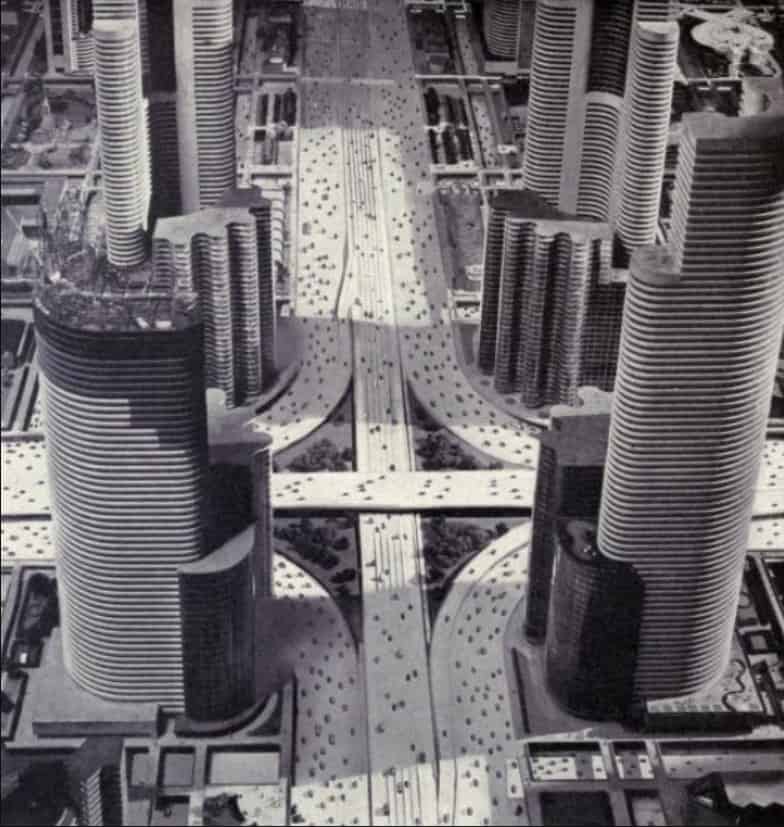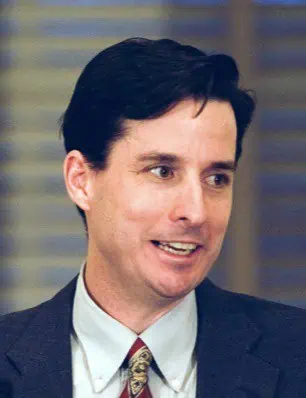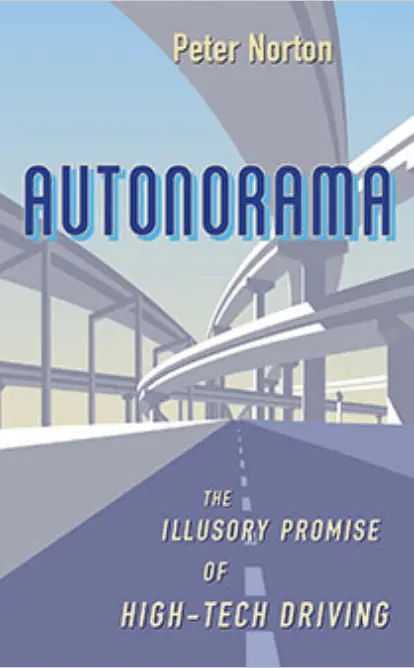
Futurama, New York World's Fair (1939)
What’s at stake?

The Ojo-Yoshida Report spoke with author Peter Norton to discuss his latest book, Autonorama: The Illusory Promise of High-Tech Driving. Norton, an associate professor of history in the Department of Engineering and Society at the University of Virginia, coined the term Autonorama as a “technofuturistic” label for decades-old auto industry marketing that now promises a driverless future. We’ve seen this show before, Norton argues, and, as in the past, it won’t deliver safe, sustainable “mobility solutions.” The author pulls no punches in documenting decades of unfulfilled auto industry promises, tracing the history of car dependency and its transition to high-tech car dependency, and offers recommendations for more efficiently transporting people to and from their destinations.
Here’s our conversation with the author Peter Norton.
OYR: First, let’s define some key mobility terms. Define transport sufficiency. Why, as you argue, is it “unspectacular”?
Peter Norton: Transport sufficiency begins with the proposition that transport is a public service that must be available to all, like safe drinking water or sanitation. As in the supply of safe drinking water, it is better to supply basic service to all than premium service to some and deficient service to others.
In ordinary passenger transportation, transport sufficiency is a state in which everyone can get to daily destinations reliably, affordably, safely and in basic comfort. In freight transportation the definition is similar, but with some obvious differences in priority; for example, comfort is less important.
Transport sufficiency is inherently unspectacular. This is worth pointing out, because spectacular transport visions have distracted us from transport sufficiency. If transport is to be a service available to all, it cannot be much more expensive than necessary. For example, if a transport policy prioritizes driving everywhere, spectacular measures (for example, massive interchanges) will be necessary, and the public costs for them will be so high that more-affordable means of access will be marginalized and car ownership will be a practical necessity – even among those who can’t afford it. Similarly, at the level of the vehicle, super-high-tech vehicles will be too expensive to contribute to transport sufficiency, even if the vehicles are robotaxis rather than personally owned vehicles. High-tech robotaxis might make car ownership less necessary, but they must be so expensive that they are not a satisfactory substitute for less-spectacular transport services.
OYR: The transition from what in the 1930s was called “motordom” to what you now characterize as “Autonorama” appears to have been, as the marketers say, “seamless.” How did the carmakers and tech companies achieve this?
Norton: Since the 1930s the details have all changed, many of them profoundly. But some important essentials persist. One of these constants is the effort to sell us futures that are so attractive that they may seem worth pursuing at any cost.
General Motors was the first company in the industry to recognize that it could sell far more cars if cities were rebuilt around cars’ demands for space and speed. But that’s a tall order. They had to make such a future credible and attractive. And that’s what they did in Futurama 1 in 1939 [at the New York World’s Fair].
And that’s what GM and many other companies are still doing today. They’re presenting impossible futures to us, and presenting them as attractive and feasible – if only we will buy everything they say we need to get there. They’re even using the same time horizon, 20 years, and the same kinds of credibility claims (above all, invoking amazing technology).
In 2022, just like in 1939, they’re saying that amazing technology makes it all possible. But amazing technology does not make car dependency work.
“Technology solves nothing. People solve or manage things, usually with technology. The distinction is essential.”
— Peter Norton

OYR: How does the marketing pitch from autonomous-vehicle promoters like Tesla differ from that perfected by “motordom”? How have today’s AV promoters refined that pitch?
Norton: The details are different, but the fundamentals are remarkably constant. Above all, amazing technology is supposed to make everything possible, even though it doesn’t.
The biggest difference is that companies now promise sustainability, not just congestion relief and crash prevention. This new promise joined the other two in the 1990s, [amid the hoopla over “smart highways”], but it has grown much more prominent.
Another difference is the extent to which tech companies are now involved. They began as junior partners in the 1950s, but now they’re full partners of the automakers in the promise making.
AV promoters have also refined their message so as to appear to consider so-called “vulnerable road users” and values such as livability. And, of course, elaborate digital imagery has displaced enormous physical models.
OYR: Do you see any societal benefits to AV and advanced driver-assistance system (ADAS) technologies?
Norton: Yes, definitely. But the benefits are far more modest than the promoters would have us believe. Automatic emergency braking, for example, has demonstrated impressive safety benefits. Autonomous minibuses and delivery vehicles may have important niche applications. On limited-access highways, autonomous trucks look promising – though freight shipment by rail is still much more efficient.
We can get the benefits of technology without succumbing to the hype. To pull this off, however, we must stop falling for the relentless claims that technology solves things. Technology solves nothing. People solve or manage things, usually with technology. The distinction is essential.
OYR: The pandemic appears to have boosted highway miles as travelers and commuters shun public transportation. How will changing commuting patterns and travel preferences shape the Autonorama?
Norton: When we use digital connections to displace physical travel, we reduce the overall costs of travel in terms of energy, safety and time. By accelerating the trend toward online meetings as satisfactory substitutes for face-to-face meetings, the pandemic has already pressed us all to make some beneficial adjustments.
But passenger travel remains essential – and we cannot afford to let ubiquitous driving in low-capacity, energy-intensive vehicles account for the vast majority of trips.
This means that public transportation and higher-capacity vehicles must grow in importance, despite the pandemic. Experts still expect the pandemic to end – and even before it ends, it is possible to take public transportation without incurring a high risk of infection. This has been routine in numerous cities.
Meanwhile, some of the modes of travel with the lowest risk of infection are also the most sustainable and affordable modes – above all walking and cycling (including cycling on electric bikes). Affordable public-policy measures can and must make these modes far more practical and attractive.
OYR: In 1974, critic Bradford Snell asserted in an influential and controversial congressional report, American Ground Transport: “We are witnessing today the collapse of a society based on the automobile.” Did he overstate his case? If so, how?
Norton: Given the vast proliferation of driving and car dependency in the U.S. since 1974, the answer is yes, certainly.
Snell was writing in the aftermath of the OPEC oil embargo and in the wake of the first Earth Day, when pollution (much of it from motor vehicles) was a subject of national alarm (and even taken seriously by the Nixon administration), and when anti-competitive practices in the U.S. auto industry had been attracting scrutiny. For reasons such as these, Snell’s assertion – while a big overstatement – had justification. He was recognizing the fact that ubiquitous driving was unsustainable in environmental and economic terms, and that a car-dependent transport system was inherently inequitable. These basic points were valid.
OYR: While you are careful not to demonize technology, you conclude that we must make a choice about balancing the application of technology by those who created it, while avoiding “solutionism.” What’s the right mix?
Norton: Technology is indispensable. But despite all the marketing, technologies are not “solutions.” Technologies are only tools. The difference is neglected but profoundly important. When we mistake technologies for solutions, we exclude people, and we reduce ourselves to the passive subjects of some unseen power that we are asked to assume is our benefactor.
In fact, technology solves nothing for us; it gives us the tools we need to serve the purposes of our choosing. When we recognize technology as tools, rather than as solutions, we step off a spiral of escalating problems beyond our control. When we recognize technology as tools, we both restore responsibility to people and restore people’s means of exercising this responsibility.
The more specific answer to your question is long, but the short way of putting it is to point out that in the 20th century, the transportation pyramid was inverted – that is, the least efficient, most unaffordable and least sustainable mode was accorded priority consideration. And our task now is to restore the pyramid such that the most efficient, affordable and sustainable modes have priority.
Policies, standards and budgets must favor walking, cycling (including on e-bikes) and transit. For more, I recommend Transport For Under Two Degrees.
Stories in This Month issue covering “Business Case for AVs”
- Is There a Business Case for Robotaxis and AV Shuttles?
- Car Culture Morphs into High-Tech Car Dependency
- What Decades of Roboshuttle Misfires Teach Us
- Where Are Robotaxis and Robovans Going?
Copyright permission/reprint service of a full Ojo-Yoshida Report story is available for promotional use on your website, marketing materials and social media promotions. Please send us an email at talktous@ojoyoshidareport.com for details.
